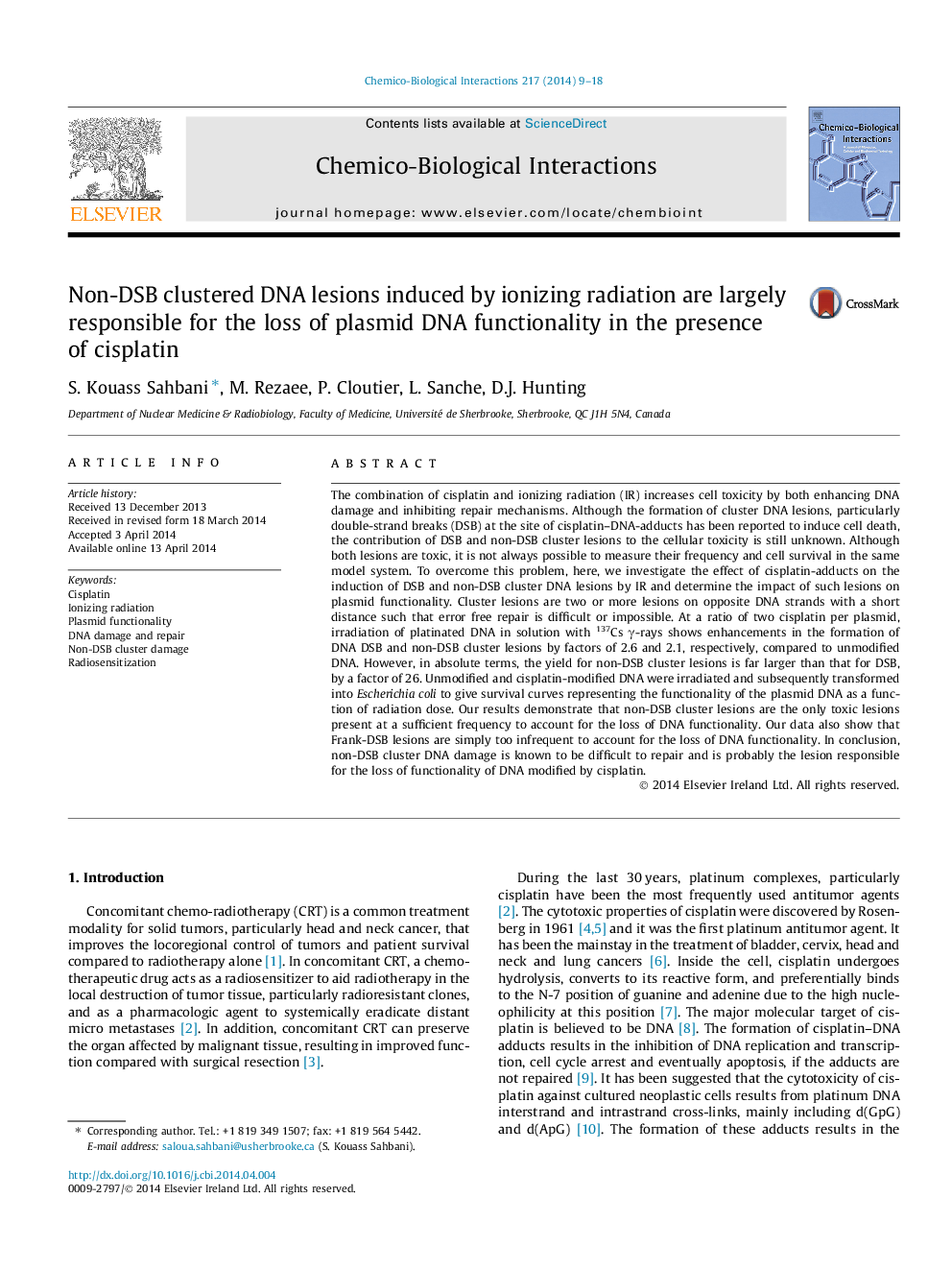| کد مقاله | کد نشریه | سال انتشار | مقاله انگلیسی | نسخه تمام متن |
|---|---|---|---|---|
| 5848054 | 1561624 | 2014 | 10 صفحه PDF | دانلود رایگان |
عنوان انگلیسی مقاله ISI
Non-DSB clustered DNA lesions induced by ionizing radiation are largely responsible for the loss of plasmid DNA functionality in the presence of cisplatin
دانلود مقاله + سفارش ترجمه
دانلود مقاله ISI انگلیسی
رایگان برای ایرانیان
کلمات کلیدی
موضوعات مرتبط
علوم زیستی و بیوفناوری
علوم محیط زیست
بهداشت، سم شناسی و جهش زایی
پیش نمایش صفحه اول مقاله

چکیده انگلیسی
The combination of cisplatin and ionizing radiation (IR) increases cell toxicity by both enhancing DNA damage and inhibiting repair mechanisms. Although the formation of cluster DNA lesions, particularly double-strand breaks (DSB) at the site of cisplatin-DNA-adducts has been reported to induce cell death, the contribution of DSB and non-DSB cluster lesions to the cellular toxicity is still unknown. Although both lesions are toxic, it is not always possible to measure their frequency and cell survival in the same model system. To overcome this problem, here, we investigate the effect of cisplatin-adducts on the induction of DSB and non-DSB cluster DNA lesions by IR and determine the impact of such lesions on plasmid functionality. Cluster lesions are two or more lesions on opposite DNA strands with a short distance such that error free repair is difficult or impossible. At a ratio of two cisplatin per plasmid, irradiation of platinated DNA in solution with 137Cs γ-rays shows enhancements in the formation of DNA DSB and non-DSB cluster lesions by factors of 2.6 and 2.1, respectively, compared to unmodified DNA. However, in absolute terms, the yield for non-DSB cluster lesions is far larger than that for DSB, by a factor of 26. Unmodified and cisplatin-modified DNA were irradiated and subsequently transformed into Escherichia coli to give survival curves representing the functionality of the plasmid DNA as a function of radiation dose. Our results demonstrate that non-DSB cluster lesions are the only toxic lesions present at a sufficient frequency to account for the loss of DNA functionality. Our data also show that Frank-DSB lesions are simply too infrequent to account for the loss of DNA functionality. In conclusion, non-DSB cluster DNA damage is known to be difficult to repair and is probably the lesion responsible for the loss of functionality of DNA modified by cisplatin.
ناشر
Database: Elsevier - ScienceDirect (ساینس دایرکت)
Journal: Chemico-Biological Interactions - Volume 217, 25 June 2014, Pages 9-18
Journal: Chemico-Biological Interactions - Volume 217, 25 June 2014, Pages 9-18
نویسندگان
S. Kouass Sahbani, M. Rezaee, P. Cloutier, L. Sanche, D.J. Hunting,